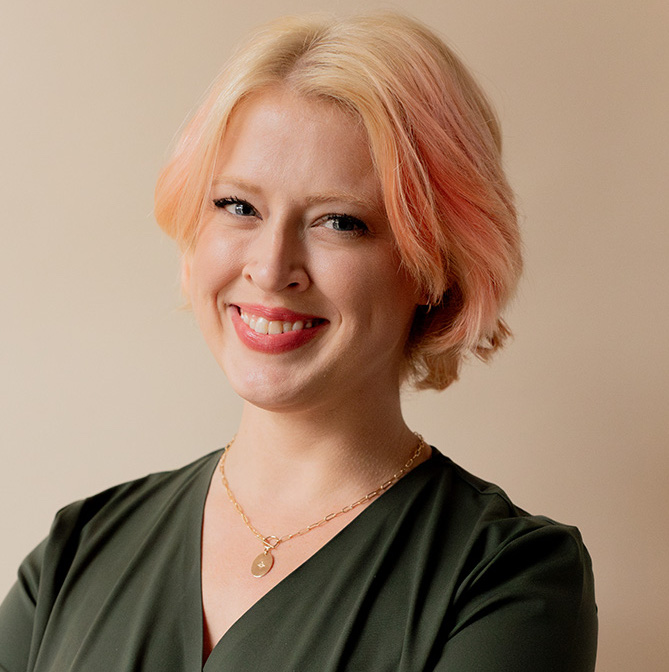
How To Set (Actually Helpful) Goals For Therapy
This post is in partnership with our friends at Talkspace, an online therapy provider connecting users with licensed therapists since 2012. Learn more about our methodology and business model here.
When I logged into my first online therapy session, I only had the intention of “feeling better.” I didn’t have the vocabulary for what I was experiencing—all I knew was that I was crying in my bathroom after a long weekend for no clear reason. I knew I needed a change.
When my therapist sent along a goals worksheet before our first therapy session, I was surprised. I had always imagined therapy to be a “show up, cry to a professional, become happy” kind of deal. Instead, I was getting homework. Wasn’t I paying someone else to do that for me? I didn’t understand what therapy goals were, or how important they’d become to me.
What are therapy goals?
News flash: Your therapist can’t do the work for you, they can only support you along the way. Therapy goals are the intentions we share with our therapist, who helps us create frameworks for measuring our progress and achieving them. (Plus, hello, accountability!)
Some types of goals for therapy might include:
- Developing coping skills for anxiety or overwhelming emotions
- Reducing the intensity of symptoms related to anxiety and depression
- Increasing self-esteem and reducing negative self-talk
- Improving sleep quality and prioritizing restfulness
- Learning new communication strategies for complex friendships, romantic relationships, or family dynamics
- Processing thoughts and feelings about past trauma
- Exploring parenting questions and challenges
- Navigating a new or existing disability
- Inviting more mindfulness and presence into everyday life
- Changing harmful or unhelpful behaviors
- Sharpening your decision-making and boundary-setting skills
- Discovering more about who you are, what you want, and where your values lie
But this list isn’t exhaustive! We all have our own challenges that would benefit from a professional’s support, and it’s more than okay if yours aren’t on this list. It’s also okay if you’ve pinpointed multiple goals and are feeling flustered about which one to work on first.
“Talking with your therapist about being overwhelmed and how to sort out where to start is often a great beginning as you get to know one another,” says Talkspace therapist Jill Daino, LCSW-R. “The key to getting started is being straightforward, this is your safe space for your thoughts and feelings.”
“Therapy goals are the intentions we share with our therapist, who helps us create frameworks for measuring our progress and achieving them.”
Embracing therapy as a safe place is precisely why goals, or intentions, are so important. This is your space, it’s your investment—it’s not a time to meet anyone else’s expectations but your own. I like to think of it this way: Our therapists are the personal trainers who offer meaningful feedback and support while we exercise our goal-setting muscles. If we can practice our goal setting in therapy, we may even be better equipped to set goals outside of it, too.
How do you set goals in therapy?
So say you’ve got a few ideas from the list above, or have some ideas of your own on what you want to focus on in therapy. How do you actually set them?
Not every therapist will use the word “goals,” but it’s common in your first session to let the therapist know what brings you to therapy and which outcomes are important to you. Erin Miller, a psychotherapist, asks first time clients: “If therapy ‘worked’ for you, what would that look like?” This helps focus on the optimal outcome of therapy—which is to journey a little closer to our best selves.
“Meeting with a therapist for a first appointment is like going on a blind date—not all of them are going to be a good match and that is ok.”
“Goal setting can look different depending on a therapist’s orientation,” Daino reminds us, since there are so many different types of therapy available. However, if you aren’t feeling like your needs are being heard or properly acknowledged, you may need to find a different therapist. Daino also explains, “meeting with a therapist for a first appointment is like going on a blind date—not all of them are going to be a good match and that is ok.”
If you don’t feel like you are setting goals, intentions, or feel like your outcomes are mutually understood, it’s worth exploring how to change the therapist you’re working with. (I’ve found it’s way easier to change therapists online than in person, which is a balm to my anxious mind).
The second, and equally important, half to goal setting is knowing how to measure them as you progress. “When I work with clients, I like to have them articulate their goals, and we put them in writing together,” says Dr. Ruth L. Varkovitzky, a board-certified clinical psychologist. “We also try to identify how we would know if things were getting better, and how we want to measure progress.” That means you’re not just in charge of setting the goals but also having conversations about what progress and “success” looks like for you.
This progress can be as straightforward as symptom improvement (which can be easier to measure in physical scenarios like fatigue, panic attacks, or sleep patterns). But not all emotional and mental progress is easy to measure, which is why you should create a framework together with your provider. Daino and the professionals at Talkspace encourage us to discuss with our therapists what it means for us to feel more fulfilled, cope with stress effectively, or find a better balance at work or with our partners.
For me, it’s usually—am I showering, eating, and staying hydrated? Am I proactively calling friends and family, and am I easefully doing the things I love to do? I can also always tell I’m on the mend from a difficult time by the state of my apartment; the cleaner it is, the clearer my mind and vice versa.
“Not all emotional and mental progress is easy to measure, which is why you should create a framework together with your provider.”
Can your therapy goals change?
I’m several years into therapy, and I speak from experience: let your goals change when they need to. Clients will frequently come in with one area of focus in mind, says Miller, and “through their work, they understand new goals and challenges that would be meaningful to conquer in therapy. Therapy is a journey, and throughout your work, your goals should be ever-evolving as you grow.”
This can be the same for your approach, too—maybe you thought you needed help solving an immediate problem but instead discover that it’s more worthwhile to explore the roots of why you’re experiencing it in the first place. Varkovitzky puts it succinctly and without a twinge of judgment: “Sometimes life presents us with situations that change our priorities.”
If you’re feeling stuck on exactly where you need to focus your attention (like I am right now), sometimes I’ll try to recall what made me sign up for therapy in the first place. Other times, I simply tell my therapist that I think my goals are changing and that I’d like her support in identifying why (or which goals to set next!)
“Therapy isn’t like taking a class,” Daino explains, because there is no syllabus and no final exam. “It has the freedom to expand based on your needs and wants given what is going on in your life.”
“Therapy isn’t like taking a class. It has the freedom to expand based on your needs and wants given what is going on in your life.”
I’ve learned that mental well-being is a process, not a product, but the effort and investment is worth it. I admit, being honest and sharing your goals with someone else feels vulnerable. But the real vulnerability, the real work I think, lies in acknowledging our own need for healing. We deserve to feel fulfilled, and to have a network of friends, families, and professionals, who will uplift us and hold us accountable.
Because sometimes we just need a little help reaching our goals.
Looking to start therapy? Here are a few tips for finding a therapist and our favorite online therapy options. Additionally, here are our favorite online couples therapy options.
This post is in partnership with our friends at Talkspace. Use code GOODTRADE at checkout for $100 off your first month of therapy.

Emily McGowan is the Editorial Director at The Good Trade. She studied Creative Writing and Business at Indiana University, and has over ten years of experience as a writer and editor in sustainability and lifestyle spaces. Since 2017, she’s been discovering and reviewing the top sustainable home, fashion, beauty, and wellness products so readers can make their most informed decisions. Her editorial work has been recognized by major publications like The New York Times and BBC Worklife. You can usually find her in her colorful Los Angeles apartment journaling, caring for her rabbits and cat, or gaming. Say hi on Instagram!
